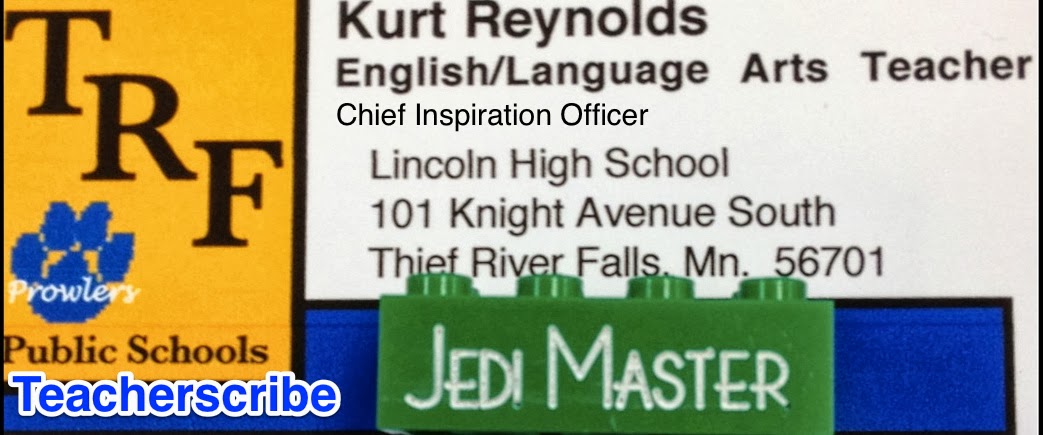My College Comp II class is working on Steven Johnson's excellent Where Good Ideas Come From. Since I've had them read so many texts (The Dumbest Generation, Everything Bad is Good for You, The Element, and a book of their choice for their Sticky-Note book report project), I thought I'd try something a little different with this book.
What I came up with was 'jig-sawing' it. I decided to give an overview of the main chapters to the class (the included Liquid Networks, the Slow Hunch, Serendipity, and Error). Then I asked them to pair up and text me what chapter sounded the most interesting to them. Once I had each group paired with a chapter, I then informed the class that I had also sent out a request to some of our administrators asking them which of the chapters they'd like to read. Then I simply matched one group up with an administrator depending on the chapter they found most interesting.
Then I charged them with this task: create a lesson plan for the class that would engage us and illustrate the main points of the chapter. Then they would present to us.
I modeled the first chapter of Johnson's book (The Adjacent Possible) for the class. Then I gave them all copies of that tradition Madaline Hunter lesson plan recipe (I wanted students to realize how much work really goes into planning effective lessons). When they voiced their concerns about not knowing what to do, I simply said this: "You've all been in classes that you hated or that bored your to death. Well, don't put us through that. Do what you wish your teachers would do in class."
The first group went yesterday. Mr. Zutz led three of my students through a unit on "Liquid Networks." And it was AWESOME. The whole class was entertained and engaged and challenged. It was a great day to be a student.
Here are the main points from their chapter -- Johnson argues that work or learning environments are often like the main elements:
First, some environments are solids. This is too restrictive. There is no freedom for ideas to flow. (I think of Paul Vallas when he ran the school districts in New Orleans where he had a city wide grade specific standardized curriculum. So in Lit and Lang 11, on day 35 of the second quarter, every junior in the city would be on the same page reading the same story and doing the same assessment). This leads to boredom and strict orthodoxy.
Second, some environments are gasses. This is too loose and unorganized. There is no real authority and all the great ideas evaporate or run wild. (I think of how this school used to be run under our former principal. He was a great man, but he gave us all too much freedom. And many of us ran with it.)
Finally, the best environments are liquids. The flow together and can slow down and swirl or speed up and rush through. The branch off into tributaries, but, ultimately, they all end up in similar destinations. (I think of Google with their 20 percent time or 3M in Minneapolis with their 15% time and where they rotate researchers every five years from one problem to a totally different one).
There is no doubt that under Mr. Zutz, LHS has become a great liquid network.
After the lesson was over and I was talking with the students one student said, "You loved this."
"Of course I did. That was great lesson and we learned so much!"
"I know," she said. "You're beaming."
I was in my element. And it was one of the highlights of my year. Thanks Mr. Zutz, Josh, Chris, and Brett.
I can't wait to see the next group present tomorrow!

No comments:
Post a Comment